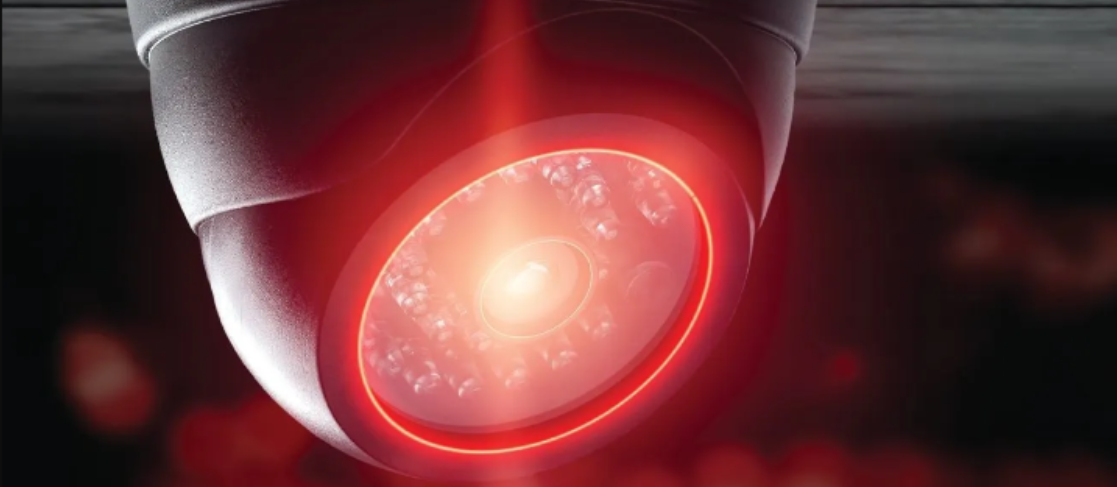Restoration Without Disruption
Why desiccant drying is a game-changer

When a commercial property suffers a large-scale water loss, the clock starts ticking. Every hour that passes can mean more damage, greater disruption and mounting recovery costs. For facility managers tasked with getting buildings back up and running, the drying method selected early in the process can be the make-or-break factor in how smoothly recovery unfolds.
One drying method that continues to gain ground in commercial restoration is desiccant drying. Particularly in large loss situations — think water damage from burst mains, sprinkler discharges or hurricane flooding — desiccants offer key advantages over traditional refrigerant-based dehumidifiers.
So, what makes desiccants so effective and how can facility managers better understand when and why to use them?
The science behind drying
To appreciate the value of desiccant drying, it helps to first understand the principles of psychrometry, or the study of air and moisture. Desiccant systems and traditional dehumidifiers approach moisture removal differently — but both rely on manipulating the behavior of water molecules in the air and in materials.
Desiccant drying is built around the concept of vapor pressure differentials. In simple terms, moisture always seeks equilibrium. When dry air is introduced to a wet environment, it naturally attracts moisture from the surrounding materials. Desiccants take this to the next level by supplying super-dry, heated air into the space under positive pressure, creating a significant vapor pressure difference. Moisture is actively pulled from materials like drywall, wood framing and flooring, dramatically speeding up the drying process.
By contrast, traditional refrigerant dehumidifiers work by changing the state of moisture: water in the air is condensed back into liquid form by passing humid air over cold coils. The condensed water is then collected and pumped out. While this method is effective, it is often limited by the amount of moisture the indoor air can hold, especially in environments that already have high relative humidity.
In a nutshell: Desiccants pull moisture out more aggressively, and they do so without relying on indoor air that may already be saturated.
Interpreting the matrix: Choosing the right drying method
The matrix highlights how desiccant drying outperforms traditional refrigerant dehumidification across the most critical factors in large-scale water loss scenarios. Desiccants score a full match in all key criteria — especially in situations involving high humidity, power limitations, and sensitive or high-value environments. Their ability to function independently of building power, rapidly reduce moisture in large or multi-level spaces, and stabilize contents early makes them a clear choice for large loss projects. In contrast, refrigerant drying methods may offer partial effectiveness but tend to fall short when scalability, speed or infrastructure challenges are involved. FMs can use this matrix as a quick reference when evaluating the drying needs of their building post-loss. While both systems have their place, the matrix reinforces that desiccants provide superior flexibility, performance and reliability when time, safety and operational continuity are at stake.

Energy usage & electrical considerations
One of the often-overlooked advantages of desiccant drying is how it interacts with a building’s electrical infrastructure. Desiccant systems run on external diesel generators, which may need to be refueled every 12 to 24 hours, depending on usage. While this adds a layer of logistical planning, it has an important upside: it leaves the building’s electrical system free for other essential operations.
This is especially valuable in health care facilities, hotels or office towers where tenant operations may still be ongoing in unaffected areas. By isolating the drying system from internal power needs, desiccant systems offer an elegant solution to a complex problem.
Compare this to traditional drying setups, wherein each room becomes its own drying chamber, filled with air movers and plugged-in dehumidifiers. This equipment load can quickly overwhelm existing circuits, leading to tripped breakers, outages or even fire risk if improperly managed. The need to rotate circuits or stage equipment carefully adds time, labor and complexity to the job.
Desiccant systems can treat large open areas as a single drying chamber. By controlling airflow through strategically placed ducting, desiccant units can dehumidify an entire building envelope with surprising speed. While air movers are still used to enhance evaporation, the overall quantity needed is far lower than in traditional setups.
Traditional methods require that each room or space has careful vortex placement to facilitate evaporation. It is a process that works — but is slower, less scalable and far more intrusive, especially when tenant access is still required.
From arenas to auditoriums, from schools to shopping centers, desiccants provide a level of broad-spectrum drying power that simply is not possible with traditional units alone.
Managing noise levels in sensitive spaces
In facilities where business continuity is a must — such as hospitals, hotels, retail stores and call centers — noise is a critical factor. Excessive sound levels can interfere with operations, disrupt sleep or work, and even affect customer perception.
Desiccant drying systems offer a major advantage in noise control. Because the units and generators are placed outside the building, their mechanical hum can be better managed by selecting appropriate trailer locations. The tubing that delivers dry air inside the structure is relatively quiet, and with fewer air movers needed overall, the interior volume is significantly reduced.
Traditional setups, by comparison, often require a dense array of loud equipment. Air movers generate a constant roar, and multiple dehumidifiers run simultaneously. The result? A soundscape that can feel more like an aircraft hangar than a professional environment.
Safety considerations: Reducing trip hazards
Jobsite safety is always a top priority, and trip-and-fall incidents are among the most common causes of injury during restoration work. Desiccant systems help reduce this risk by removing much of the equipment clutter from the work area. Because the desiccant unit and generator are stationed outside, there are fewer cords and machines scattered throughout the building.
Tubing used to distribute air from the desiccant system is often suspended from ceilings or routed above head height, which minimizes obstruction in walkways and hallways. While some air movers are still necessary — and their cords must be taped down — the overall footprint of equipment is significantly reduced.
It is also worth noting one area that requires special attention: elevator shafts. If tubing is routed through them for vertical air distribution, FMs must ensure OSHA-compliant safety barriers are in place to prevent accidental access or obstruction.
Cost considerations: Upfront vs. long-term value
Desiccant drying systems come with higher upfront costs. There are fees associated with transportation, setup, takedown, generator fuel and around-the-clock monitoring. However, the long-term savings are significant.
Faster drying times can:
-
Prevent or limit secondary damage like mold growth, warping or corrosion.
-
Help meet insurance coverage thresholds for mitigation timelines.
-
Reduce business downtime, keeping tenants operational and satisfied.
-
Eliminate the need for extended demolition and rebuilds.
In short, a few extra dollars invested in rapid structural drying can save thousands in business interruption, rebuild costs and tenant retention.
Added bonus: Contents stabilization
Desiccant drying systems do not just target structural elements; they also help stabilize soft contents like furniture, textiles and upholstery — especially in the early stages of a loss. While not a replacement for a full contents cleaning process, the low humidity environment they create can slow the degradation of sensitive materials, giving restoration teams a better chance to recover valuable items.
Versatility & application
Desiccant drying is not just for one type of building.
Because the tubing system is flexible and relatively easy to install, desiccants can be deployed in both modern and historic buildings of virtually all sizes and uses, with minimal disruption to daily operations. Their ability to operate without relying on interior power makes them especially useful in disaster zones or buildings undergoing utility repairs.
Final thoughts: Planning a drying strategy
As with any tool, success comes down to planning and execution. Depending on equipment availability or site conditions, it may be necessary to start the drying process with traditional dehumidifiers and air movers. However, it is essential to assess whether a hybrid or full desiccant solution is appropriate once initial stabilization is complete.
By understanding the strengths, logistics and benefits of desiccant drying, FMs can make smarter decisions that protect both property and people. Whether dealing with a flood from a broken riser or storm damage across multiple floors, the right drying plan can dramatically reduce recovery time and cost.
Desiccants might not be the flashiest piece of equipment on the jobsite — but when used strategically, they just might be the most powerful tool in an FM team’s drying arsenal.


Read more on Risk Management and Real Estate or related topics Emergency preparedness, response and recovery and Facility Resilience
Explore All FMJ Topics









